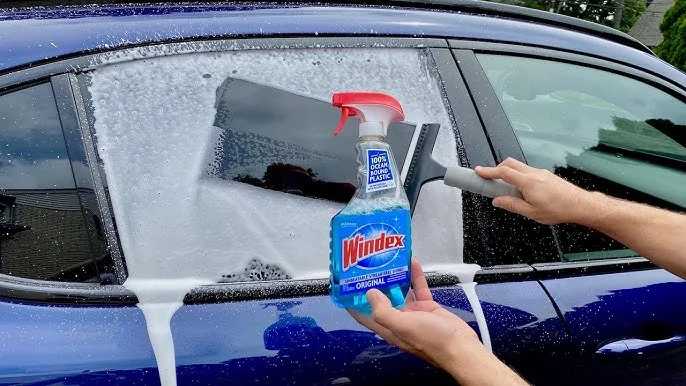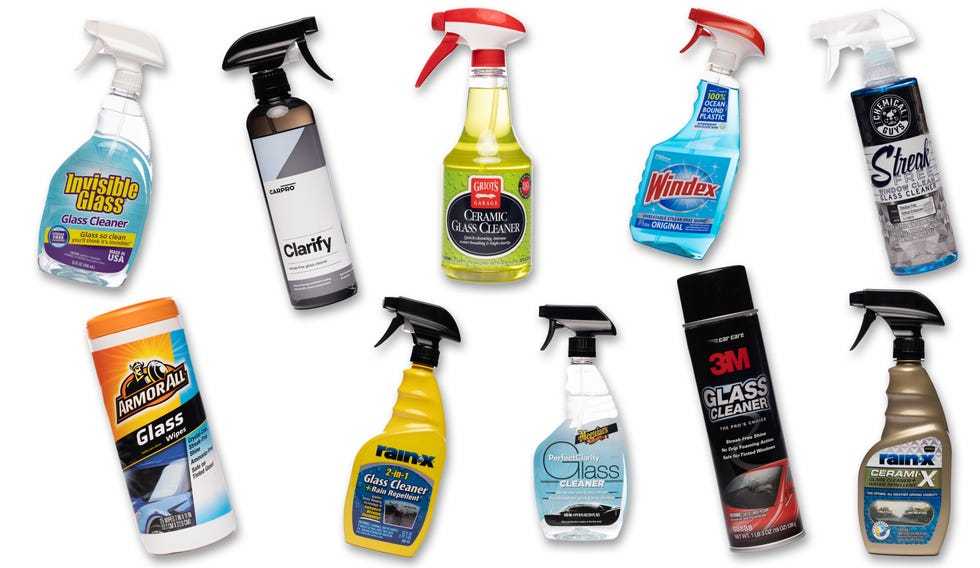To strengthen laminated car glass, start by applying specialized film coatings that enhance durability and impact resistance, and ensure proper maintenance to prevent chips and cracks from worsening. Regular inspections and prompt repairs also play a critical role in preserving its strength. For a quick fix, consider professional reinforcement options like resin injections or installing protective films designed for safety.
If you want your laminated car glass to withstand more impact and last longer, it’s essential to follow specific steps. Strengthening involves not just immediate fixes but ongoing care, including choosing the right protective materials and maintaining the glass properly. By doing so, you can improve safety, reduce the risk of shattering, and save money on replacements over time.
Cracked or weakened laminated glass can compromise your safety while driving. Luckily, there are effective ways to make it stronger, from applying safety films to professional reinforcement techniques. This article will explore practical tips and methods to help you bolster your laminated car glass, ensuring it remains tough enough to handle everyday driving challenges.
How to Strengthen Laminated Car Glass
Understanding Laminated Car Glass and Why It Needs Strengthening
Laminated car glass is made by bonding two glass layers with a plastic layer, usually polyvinyl butyral (PVB). This design makes the glass safer because it holds together when broken. However, even laminated glass can be vulnerable to cracks, chips, or sudden shattering under certain conditions.
Strengthening laminated glass helps it withstand impacts, extreme temperatures, and stress over time. It’s especially important for drivers who want to improve safety and reduce repair costs. Knowing the right methods to reinforce your glass can extend its lifespan and improve overall vehicle safety.
Factors That Affect Laminated Glass Strength
Various elements influence the durability of laminated car glass. These include exposure to UV rays, temperature fluctuations, physical impacts, and manufacturing quality.
Heat can cause the plastic interlayer to soften, leading to increased risk of deformation. Cold temperatures may make the glass more brittle. Additionally, minor chips or scratches can weaken the glass over time if not properly addressed. Recognizing these factors helps in choosing effective reinforcement techniques.
Methods to Strengthen Laminated Car Glass
1. Applying Protective Coatings
Protective coatings serve as a shield against UV rays, scratches, and minor impacts. These coatings are usually clear, durable layers that bond with the glass surface.
Benefits of protective coatings include:
- Reducing ultraviolet light penetration, which weakens the plastic layer
- Providing a barrier against scratches and minor chips
- Improving resistance to environmental factors like pollution and dirt
Applying a high-quality automotive glass coating can improve the lifespan of your laminated glass significantly. Always choose products suited for vehicle glass and follow application instructions carefully.
2. Using Laminated Glass Reinforcement Films
Reinforcement films are special polymer layers that can be added to laminated glass during or after installation. These films increase resistance to impacts and prevent crack propagation.
Features of reinforcement films:
- Added durability and impact resistance
- Protection against vandalism and accidental strikes
- Simple to install and remove if needed
Consult a professional to ensure compatibility with your existing glass and proper application. Reinforcement films are an affordable way to boost laminated glass toughness.
3. Regular Maintenance and Inspection
Routine inspections can catch small chips or cracks before they expand. Maintaining your glass involves cleaning with non-abrasive cloths and avoiding harsh chemicals.
Key maintenance tips:
- Check for chips or cracks after long drives or impacts
- Avoid using abrasive cleaners or rough cloths that can scratch the glass
- Clean the glass regularly to remove dirt and debris that can cause scratches over time
Timely repairs and inspections prevent small damage from becoming serious problems, extending the strength and safety of your laminated glass.
4. Opting for Professional Glass Treatments
Professionals offer advanced treatments that can enhance the strength of laminated glass. These include specialized heat treatments and chemical strengthening procedures.
Advantages include:
- Uniform reinforcement without compromising visibility
- Enhanced resistance to temperature changes and impacts
- Minimized risk of delamination or weakening over time
Choosing a reputable auto glass specialist ensures the treatment is applied correctly and lasts longer, offering peace of mind on the road.
Additional Tips for Maintaining Laminated Car Glass
Proper Installation is Crucial
Ensure your laminated glass is installed correctly by professionals. Improper installation can lead to weak points, leaks, and increased susceptibility to damage.
Monitor for Damage and Address It Promptly
Small chips and cracks should be repaired immediately to prevent them from spreading. Use quality repair kits or seek professional assistance for lasting results.
Control External Factors
Park in shaded areas to protect glass from UV damage and temperature extremes. Avoid slamming doors or objects hitting the glass to prevent impact damage.
Use Quality Glass Accessories
Opt for high-quality wipers and cleaning materials designed for glass surfaces. These reduce scratching and maintain clarity, which indirectly supports the glass’s strength.
Innovations in Laminated Glass Reinforcement
Recent advances include nano-coatings and smart glass technologies that improve impact resistance and safety.
Nano-coatings create a durable barrier, reducing the chance of cracks forming from minor impacts. Smart glass can change its properties with temperature or electrical signals, providing additional protection.
Staying informed about these innovations allows vehicle owners to choose cutting-edge solutions for their laminated glass needs.
Summary of Best Practices for Strengthening Laminated Car Glass
- Regularly inspect and repair damage
- Apply protective coatings and reinforcement films
- Use professional treatments for enhanced durability
- Maintain proper installation and external conditions
- Stay updated on new glass strengthening technologies
Adopting these practices helps ensure your laminated glass remains strong and safe across various driving conditions.
By understanding the factors that influence laminated car glass strength and applying the appropriate reinforcement methods, you can significantly improve its resilience. Proper maintenance, professional treatments, and preventive measures all play a vital role in keeping your vehicle’s glass durable. Remember, investing in these techniques enhances safety, reduces repair costs, and provides peace of mind during every drive.
Laminated Glass vs Tempered Glass • Rescue Hammer • #ThatBeardedMechanic #WindowBreaker #Shorts
Frequently Asked Questions
What are effective methods to reinforce laminated car glass?
To strengthen laminated car glass, consider applying a specialized resin or bonding agent designed for automotive glass. These products can fill micro-cracks and improve overall durability. Ensuring the glass is properly cleaned and free of debris before application enhances adhesion. Additionally, installing protective films or coatings can provide extra resistance against impacts and environmental stressors.
Can regular maintenance help improve the strength of laminated car glass?
Yes, regular inspections for chips, cracks, or other damages help maintain the integrity of laminated glass. Promptly repairing small damages with recommended fillers or sealants prevents them from spreading. Keeping the glass clean and avoiding abrasive cleaning methods also preserves its strength and prevents unnecessary weakening over time.
Are there specific treatments or products recommended for reinforcing laminated car glass?
Using high-quality laminating adhesives and impact-resistant films specifically designed for automotive applications can significantly enhance glass strength. Professional treatments like glass strengthening services, which utilize advanced chemicals or heat processes, can augment the glass’s resistance to breaking. Always follow manufacturer instructions and consult professionals when applying these products or treatments.
What role do environmental factors play in the durability of laminated glass, and how can I mitigate their effects?
Exposure to extreme temperatures, UV rays, and harsh weather can weaken laminated glass over time. To mitigate these effects, use UV-protective coatings and ensure proper sealing around the glass edges. Parking in shaded or sheltered areas also reduces exposure to damaging environmental factors, extending the glass’s lifespan and maintaining its strength.
Final Thoughts
Pour renforcer le verre de voiture stratifié, il est essentiel de choisir un film de protection de haute qualité et de le faire installer par un professionnel.
Effectuer des inspections régulières permet de repérer rapidement toute fissure ou faiblesse.
Aplicar ces méthodes prolonge la durée de vie du verre tout en améliorant sa résistance.
En conclusion, savoir comment renforcer laminated car glass vous aide à assurer votre sécurité et à préserver votre véhicule efficacement.



